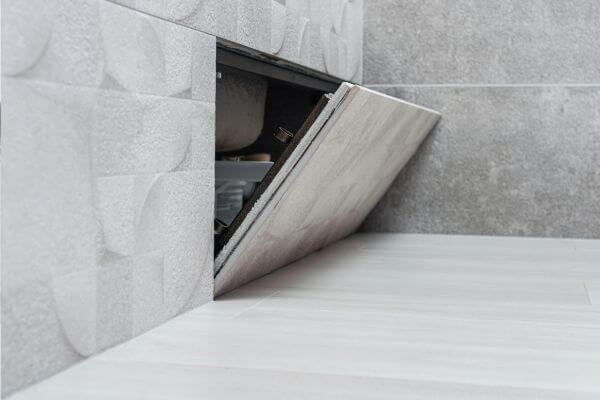Technical methods for the detection of concealed manholes
When manual methods are not enough, it is time to turn to more advanced technologies:
- Geo-radar: Geo-radar is a non-invasive technique that uses electromagnetic waves to detect underground structures. It is especially useful for locating manholes hidden under concrete or pavement without the need to break the ground.
- Electromagnetic Detection: This technique consists of using a device that emits electromagnetic signals to identify metallic objects or changes in the subsoil that could indicate the location of a manhole.
- Inspection Cameras: If you have access to the pipes from another point, inspection cameras can help you to follow the pipe route to locate the manhole.
When to contact a professional
While some methods can be done on your own, it is often safer and more effective to enlist the help of professionals to locate a hidden manhole. Manhole detection experts have the equipment and expertise to find manholes without damaging your property.
If you have tried the above methods without success or if you prefer a guaranteed solution, at Limpiezas Domingo we offer specialised services in the detection of hidden manholes. We use advanced technologies such as georradar and electromagnetic inspection equipment to locate manholes quickly and without the need for invasive works.
Prevention: Preventing the loss of manhole locations
Once you have located the hidden manhole, it is important to take measures to ensure that it does not get lost again:
- Mark the location: Use visible markers or references on the ground to remember the exact location.
- Record the location: Update your property plans with the precise location of the manhole for future reference.
- Regular maintenance: Carry out regular inspections to ensure that the manhole is accessible and in good condition.
In conclusion, finding a hidden manhole may seem like a challenge, but with the right tools and techniques, it is a manageable task. Whether using manual methods or advanced technologies, it is crucial to locate these manholes in order to keep the sanitation system in optimal condition.
If you prefer to leave this task in the hands of experts, do not hesitate to contact Limpiezas Domingo. Our hidden manhole detection services are designed to offer you the most efficient and effective solution, without the need for invasive work on your property.



Recent Comments